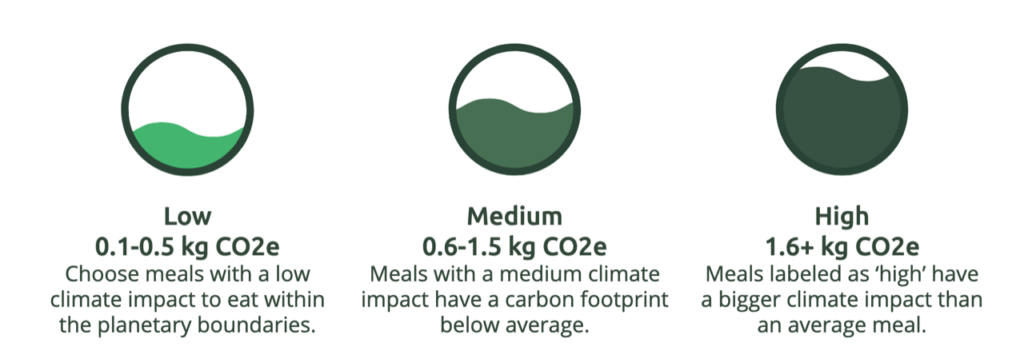
How much CO2e can a meal emit to achieve the goals of the Paris Agreement?
The food we eat accounts for about 28% of global CO2e emissions. Each stage of the food production process – cultivation, farming, processing and transportation – contribute to various greenhouse gas emissions, collectively referred to as the carbon footprint of a food product. The carbon footprint of foods can vary greatly depending on type of food product, production method and energy mix in the country of production. To give an example: beef can emit up to 60 kg CO2e per kg, while lentils have a carbon footprint closer to 0.3 kg CO2e per kg. To reduce the climate impact from food, we need to shift our diets to include less carbon heavy food products. To guide the COP26 conference visitors to better food choices for our planet, we have teamed up with Klimato to present climate labels on all menus during. Klimato uses climate data from lifecycle assessments to calculate the carbon footprint of meals served during the conference. The Klimato climate label indicates whether a dish has a Low, Medium or High carbon footprint.

Today, an average meal has a carbon footprint of 1.7 kg CO2e in the UK. According to the WWF, we need to get this number down below 0.5 kg CO2e to reach the goals defined in the Paris Agreement.
This text is from Klimato. Read more about Klimato on their website.
Photo in the header is from Jonathan Pielmayer at Unsplash.






